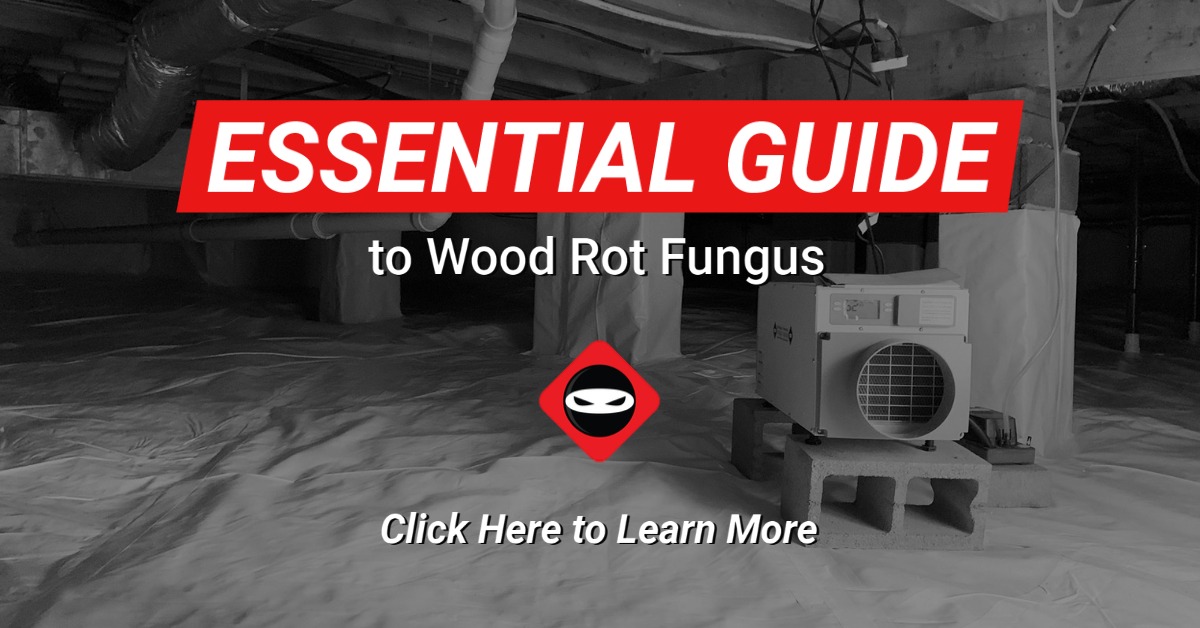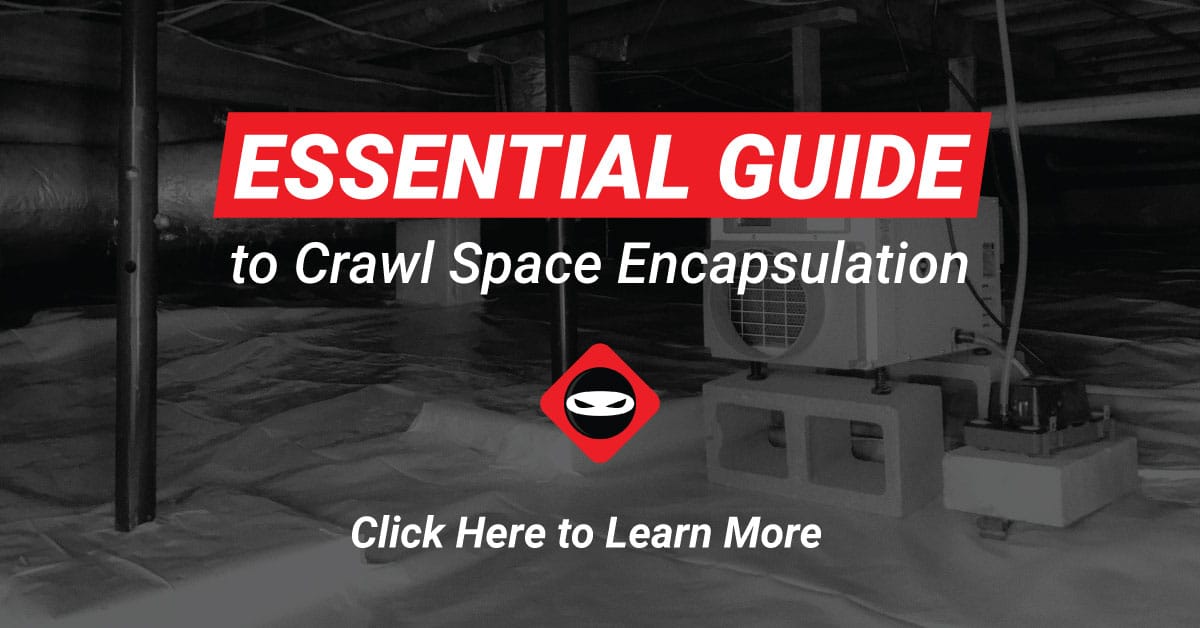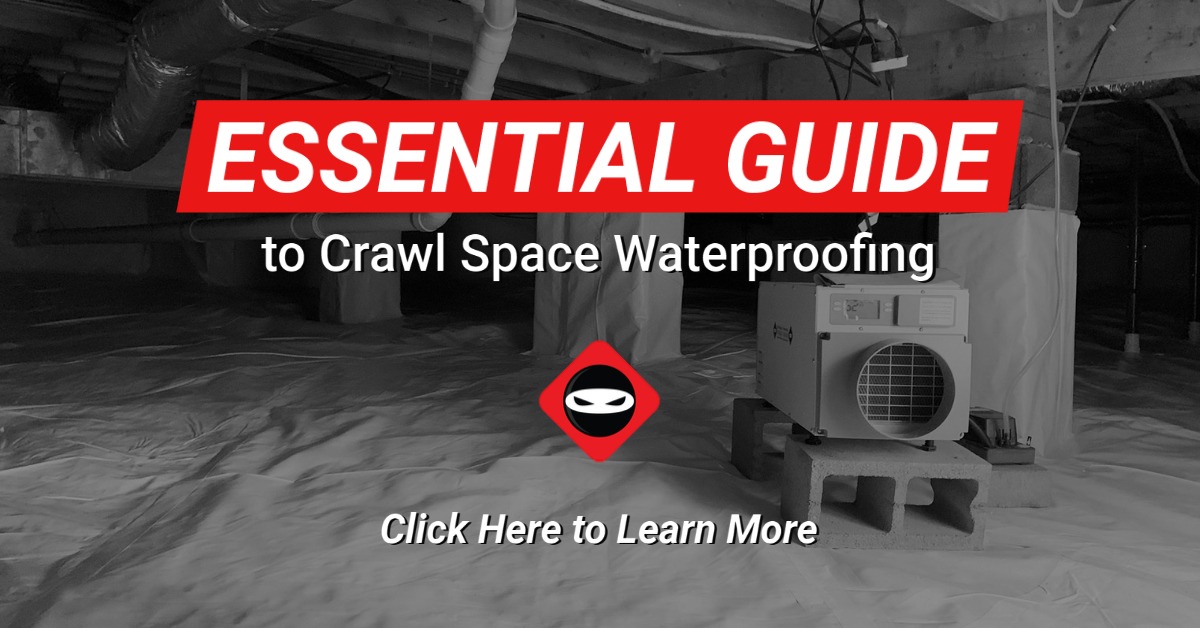Dirt crawl space problems can have a major affect on your home’s indoor air quality. This article will hopefully help you understand the importance of fixing your dirt crawl space or dirt basement. Controlling moisture in a dirt crawl space or basement is priority number one to ensure a healthy home for years to come.

Why Do You Have a Dirt Crawl Space?
The dirt crawl space is one of the easiest ways to construct a home on unlevel terrain. It costs a lot of money to build basements or level uneven soil so the home builder created the elevated home design on a crawl space. This way they can place all the mechanical, plumbing, and other eyesore building materials in the crawl space while saving money in the construction process.

The Problem With Dirt Crawl Spaces
The problem with a dirt crawl space is it gives off lots of groundwater in the form of humidity from the soil. Vapor barriers are usually installed in dirt crawl spaces and are essential to help control moisture but are only one piece of the puzzle. When this humidity is absorbed by wood building materials in the crawl space and the rest of your home, it can be a disaster once mold and wood rot fungus begin destroying the foundation. Don’t solely rely on a cheap loose-laid vapor barrier to control humidity in your dirt crawl space.
Ready to find out more?
Drop us a line today for a free quote!
Click HereDirt Crawl Spaces Flood
Not only do dirt crawl spaces give off humidity, and lots of it, but they are also at high risk of heavy flooding. Contractors don’t focus much attention on foundation drain systems and eventually, they fail and allow all the water from the surrounding yard to enter the crawl space or dirt basement. Installing an interior french drain system along with correcting outside drain problems can prevent your crawl space from flooding.

Dehumidifiers in Dirt Crawl Spaces
If you have installed the french drain properly and the vapor barrier is covering the entire ground, foundation walls, and pillars, consider installing a crawl space dehumidifier. Crawl space dehumidifiers are often overlooked, but they are our #1 recommended appliance to install in a moist crawl space. Humidity control does not occur naturally in a dirt crawl space. Making sure you keep the relative humidity between 45% and 55% is best for dirt crawl spaces and basements.
What Next?
Do you need help with crawl space encapsulation in Alabama, Georgia, Delaware, North Carolina, Tennessee, Kentucky, or South Carolina? If so, please contact us to schedule your assessment. Also, let us know in the comments below if you’d like to suggest a future blog post.
Perhaps you’d like to tackle your own crawl space repair. Visit our DIY Store.
Contact us if you need help fixing your crawl space, basement, or yard drainage by clicking here.
Learn about Crawl Space Ninja Franchise opportunities.


6 thoughts on “Dirt Crawl Space Problems”
Hi,
I am not in your area of service, I live in Montpelier, VA. I did buy a Aprilair dehumidifier from you though and wondered if you could answer a question. I put the dehumidifier in, and it is running all the time. I called 2 companies out to see what they suggested. I got a confirmation from one of the companies that the dehumidifier size was proper for my crawlspace and positioned correctly. Both would put the heavy-duty plastic down and run it up on the walls and piers. One company would take all the insulation out from between the floor joist and run insulation board on the walls. They would also put 2 vents in my house that would connect to the crawlspace. Both companies would seal the vents. The other company did not mention anything about the cinderblock walls or the insulation. There is some moisture showing on the cinderblock around the crawlspace.
Do you recommend when sealing the crawlspace to insulate the walls and removing the fiberglass insulation between the floor joists? And putting vents into the house?
Hello Sam, sounds like you have a lot of information to digest and I hope this helps. I never recommend creating air flow from the living space to the crawl space because most homes leak enough air so that it is already happening through the stack effect. Especially around rim joist. I would do the opposite and seal major sub-floor penetrations and rim joists. Also, if your sub-floor insulation is damp or there is mold on the joists, remove it and install foundation wall insulation, preferably termite resistant foam board or insul-barrier (links to our diy store for wall insulation: https://diy.crawlspaceninja.com/wall-insulation/). If your block walls are wet, you should consider a french drain and sump pump inside the crawl space, it will only get worse as time goes on and you don’t want to remove vapor barrier to have to install later. Lastly, please watch this video, I think it will help you. I know it is lengthy but a lot of good info. https://youtu.be/oy68gtEi_bg I hope all that helps. Good luck!
Hi,
My crawl space is needing a french drain. My footer is above grade in other words I can’t put it beside the footer. If I dig it will be below the footer. any suggestions? love all the videos by the way!
Thanks Ken
Hi Ken, you may want to dig your trench and install the drainage pipe about 2 to 3 feet from the footer. If the vapor barrier is installed as part of the system like we discuss here: https://crawlspaceninja.com/waterproofing/crawl-space-waterproofing/, then the water will still find its way into the water management system. I’d caution you on digging close to the footer. Not sure if excavating the soil directly next to the footer will compromise its integrity. If there is any possibility of that I would ask a structural engineer for their opinion. Hope that helps.
I have an appointment already scheduled with your company here in Tn. I have a partial encapsulation and treated mold and fungus in 2017. Now I have mold and fungus again but worse this time my grandbaby’s room smells of mold but I can’t see anything inside. I am on a grade with a positive drain that works and have never seen any standing water in the crawl space but my cinder blocks are wet all the way to the rim board in the crawl space. The cinder block are also wet 5 blocks high in my garage on the interior wall. I know that I need an encapsulation but I worried about why or what happens to the cinder block once encapsulation is done with dehumidifier. Will my cinder block still be wet in the garage and on the foundation? I have no standing water anywhere. So I am assuming that the cinder block are absorbing water from the ground. Not really sure.
Hello Pam, it would be a good idea to look at your crawl space and garage from several areas. Address any outside water being dumped near the foundation and garage walls if needed via downspout extensions and french drains. Waterproof the inside of the garage and the crawl space with a water management system. Eventually both walls could start leaking and cause water to come into those spaces if not addressed now and properly. I’d also recommend a dehumidifier in the crawl space and garage. The block should be fine as long as we give that water a place to go once it enters the spaces. Not addressing it can cause hydrostatic pressure to build and could bow, tip or sheer the wall with enough pressure. Hope that helps.